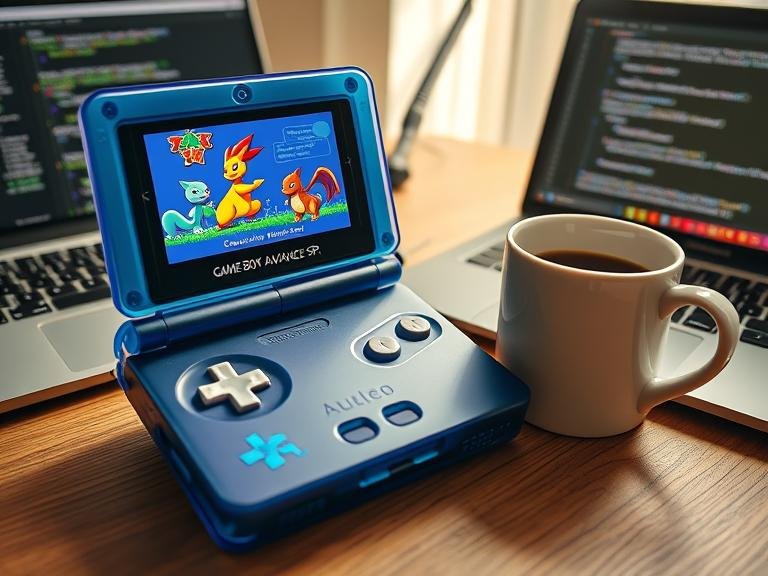The Game Boy Advance, released by Nintendo in 2001, stands as a titan of handheld gaming. Its library is a treasure trove of iconic titles, from the deep tactical gameplay of Fire Emblem and Advance Wars to the timeless adventures of Pokémon Ruby & Sapphire and The Legend of Zelda: The Minish Cap. For many, the GBA represents a pinnacle of portable, pixel-art gaming. But what if the stories could be rewritten? What if the challenges could be remixed, or entirely new worlds built upon this beloved hardware’s foundation? This is not a hypothetical question; it is the vibrant, ongoing reality of the GBA ROM hacks community.
A GBA ROM hack is a modified version of a original Game Boy Advance game file (the ROM). Through a combination of specialized software tools, programming ingenuity, and immense artistic passion, hackers alter the game’s code, graphics, music, and data. The result is a transformative work that can range from a simple quality-of-life improvement to a completely new game experience, all running on the original GBA hardware or through emulators on modern devices.
This practice is a form of digital preservation and creative expression, a testament to the enduring legacy of 32-bit gaming.
Table of Contents
The Spectrum of Hacks: From Tweaks to Total Conversions
The scope of GBA ROM hacks is vast, but they generally fall into several distinct categories:
- Quality of Life (QoL) and Difficulty Hacks: These are perhaps the most common and user-friendly hacks. They aim to refine the original experience without altering its core identity. Examples include:
- Pokémon Crystal Clear: An open-world version of Pokémon Crystal that removes linear story progression.
- Fire Emblem: The Sacred Stones – Randomizer: This popular hack randomizes character classes, items, and enemies, creating a fresh and unpredictable challenge with every playthrough.
- Various “Difficulty Hacks” for games like Metroid Fusion or Zelda, which rebalance enemy health, damage, and puzzles to provide a sterner test for seasoned veterans.
- Revisions and Expansions: These hacks take the original game and significantly expand upon it. They add new areas, characters, story elements, and gameplay mechanics while keeping the core engine and feel intact.
- Pokémon Gaia: A celebrated hack built on the FireRed engine, featuring a brand-new region, a original story, and Pokémon from generations I-VI, complete with modern mechanics like Mega Evolution.
- Mother 3 (Fan Translation): While not a hack of the game itself, the incredibly professional fan translation of Mother 3 from Japanese to English is a landmark achievement that made a masterpiece accessible to a global audience, demonstrating the community’s technical and editorial skill.
- Total Conversions: This is the pinnacle of ROM hacking. A total conversion uses the original game merely as a shell—an engine to power an entirely new creation. The story, world, characters, graphics, and music are all original or heavily remixed.
- Pokémon Unbound: A massive, feature-complete hack with a new region, a dark and engaging story, extensive post-game content, and countless customization options. It is often cited as one of the most polished and complete ROM hacks ever made.
- The Legend of Zelda: Voyager of Time: A project that aims to port the world and dungeons of Ocarina of Time into the top-down style of The Minish Cap, showcasing incredible ambition.
The Tools of the Trade
Creating a ROM hack is a multidisciplinary effort. Hackers aren’t just programmers; they are cartographers, writers, pixel artists, and composers. They rely on a suite of specialized tools:
- Hex Editors: For directly manipulating the game’s binary code.
- Script Editors: To rewrite dialogue, events, and story triggers.
- Tile Editors: To redraw the game’s graphics, from character sprites to world maps.
- Music Inserters: To import new or remixed soundtracks.
- Emulators with Debugging Features: To test changes in real-time and identify specific values in the game’s memory.
The process is often compared to digital archaeology, requiring patience to understand how the original developers structured their data.
The Legal and Ethical Gray Area
It is crucial to address the legal context of ROM hacking. The act of creating a hack for personal use is generally considered a legal gray area, falling under fair use for the purpose of study and experimentation. However, distributing a ROM hack itself is illegal. This is because a ROM hack is a derivative work that contains copyrighted code from the original game.
The standard and ethical practice within the community is to distribute the hack as a “patch file” (usually an .ips or .bps file). This patch contains only the changes made to the original game. To create the playable ROM, a user must legally acquire a “clean” ROM dump from their own physical game cartridge and apply the patch file to it using a patching tool. This method respects copyright by ensuring that the user provides the core game asset themselves.
A Community of Passion
The GBA ROM hacking scene is not a commercial enterprise; it is a labor of love. Developers spend thousands of hours on these projects with no expectation of financial reward. They are driven by a deep affection for the source material and a desire to contribute to its legacy. Communities on sites like PokeCommunity.com, ROMhacking.net, and various Discord servers serve as hubs for collaboration, feedback, and sharing knowledge, ensuring that the craft continues to evolve.
These hacks are more than just modified games; they are a form of interactive fan fiction, a love letter to a bygone era of gaming, and a powerful demonstration of what a dedicated community can achieve when fueled purely by passion. They keep the GBA library alive, dynamic, and endlessly replayable, proving that even decades after its release, the Game Boy Advance still has new worlds left to explore.
Informational FAQs
Q1: Is it legal to download and play GBA ROM hacks?
A: The legality is complex. Downloading the patch file (the hack itself) is generally acceptable. However, downloading a pre-patched ROM file (which contains the copyrighted game code) is illegal. The ethical method is to create your own ROM backup from a game you own and apply the patch to that file.
Q2: What do I need to play a GBA ROM hack?
A: You need two things:
- A Emulator: Software that mimics the GBA hardware on your PC, phone, or other device. Popular choices include mGBA, VisualBoyAdvance-M, and My Boy!.
- The Patched ROM File: You must legally obtain a “clean” ROM from a game you own, then use a patching tool (like Lunar IPS or Floating IPS) to apply the downloaded patch file (.ips or .bps) to it, creating a new, playable ROM file.
Q3: Where can I safely find GBA ROM hacks?
A: Reputable community sites are the best sources. These include ROMhacking.net (for hacks of all genres) and PokeCommunity.com (specifically for Pokémon hacks). These sites host patch files and provide forums for discussion and support.
Q4: Can I play these hacks on real GBA hardware?
A: Yes, but it requires additional steps. You can write the patched ROM file onto a blank flash cartridge (like an EverDrive or EZ-Flash) using a special device. When inserted into a real GBA, the flash cart will boot the hacked game.
Q5: Why do people make ROM hacks instead of their own games?
A: Creating a game from scratch is an enormous undertaking. ROM hacking allows creators to leverage the polished, stable engine of an existing game, letting them focus their efforts on storytelling, world-building, and design without needing to program a complex engine from the ground up. It’s a gateway into game development for many.


